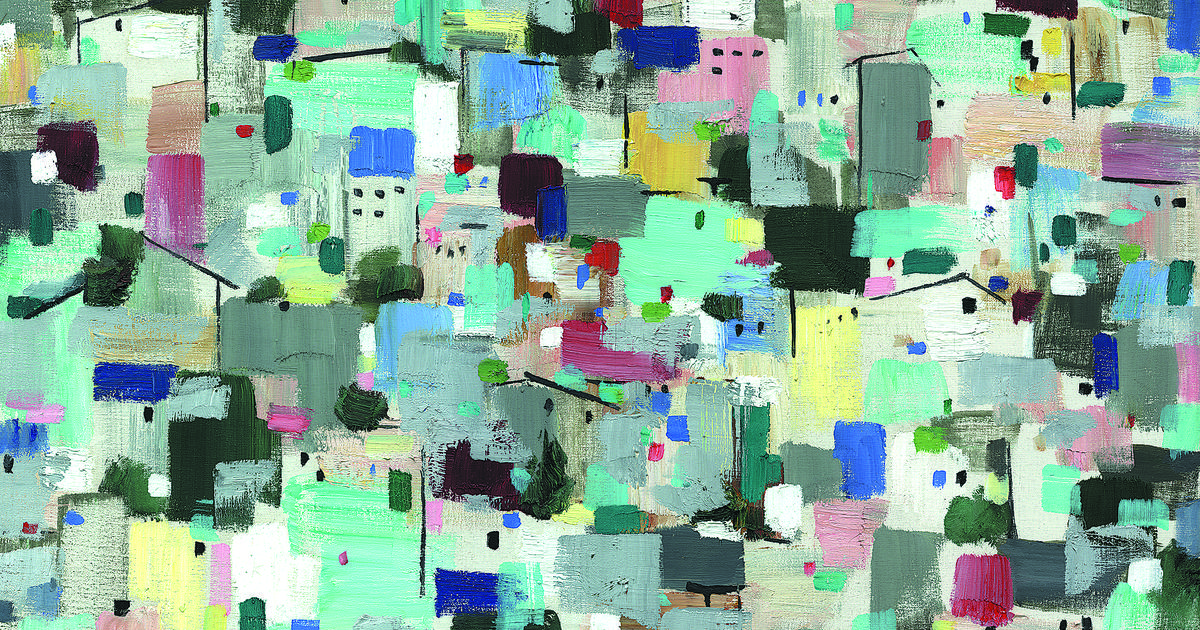The very recent exhibition at the China Art Museum in Shanghai, which continues until May 5, is the largest showcase ever devoted to two modern Chinese painters, Lin Fengmian (1900-1991) and Wu Guanzhong (1919- 2010).
Titled
Pictures of China: Artworks by Lin Fengmian and Wu Guanzhong
, the exhibition features 200 paintings, sketches and other works by the two artists spanning different phases of their careers, the exhibition said. Wang Yichuan, director of the museum previously known as the Shanghai Art Museum.
Visit to the exhibition
Pictures of China: Artworks by Lin Fengmian and Wu Guanzhong
at the China Art Museum in Shanghai. GAO ERQIANG / CHINA DAILY
Both men studied in France and returned to the country where they contributed significantly to the modernization of Chinese art, according to Chen Xiang, the museum's director and chief curator of the exhibition. French arts and French culture had a great impact on them; Moreover, the exhibition is presented as one of the events honoring the Franco-Chinese Year of Cultural Tourism.
Lin and Wu left large collections of paintings in Shanghai. The second donated many of his paintings to the city's Museum of Arts, which organized two major retrospectives of the artist in 2006 and 2010. His family bequeathed a third batch of paintings to the museum after his death, a gesture linked recognition of the development of the city's art scene that Wu had witnessed, says Yang Qi, deputy director of the Chinese Academy of Arts in Shanghai.
Lin worked at this establishment for many years. He handpicked around 100 paintings and stored them at the academy before leaving Shanghai for Hong Kong in 1977. He later donated them to the academy along with 118 other paintings.
The exhibition of his works, which cover the most important phases of his career, gives art lovers and collectors an excellent opportunity to discover the artist's portfolio, believes Mr. Chen.
Lin Fengmian was the son of a mason in today's Meizhou City, Guangdong Province. Very early on, he showed a fascination with art and, as a child, was introduced to traditional Chinese painting techniques. After college, he obtained a scholarship to study in France, at the École nationale supérieure d'art in Dijon; he subsequently joined the École nationale supérieure des Beaux-Arts in Paris. His paintings were exhibited at the Paris Autumn Salon for two consecutive years.
In 1926, he returned to China and was invited by Cai Yuanpei (1868-1940) to take over as director of the National School of Fine Arts in Beijing. Later, he was the first director of the National College of Arts in Hangzhou, Zhejiang Province, which is now known as the China Academy of Arts.
Lin was convinced that Chinese art should break away from the stylized aesthetic tradition of the literati and artistic elite, and participate in real life.
"Through his studies in France, Lin developed new perspectives for Chinese art, and upon returning to China, he embarked on the path that led to the modernization of traditional ink painting
. "
analyzes Xiang Liping, executive curator of the exhibition.
While some of the artist's watercolors reflect the influence of contemporary European masters, such as Matisse and Cézanne, his portraits of ancient Chinese ladies, his landscapes populated with birds and his scenes of country life demonstrate a harmonious combination between Chinese philosophy and Western art.
The Dance
, painting by Lin Fengmian. PROVIDED TO CHINA DAILY
The Hangzhou National College of Arts, of which he was the founding director, encouraged some of the country's best-known modern masters, including Wu Guanzhong and Chu Teh-Chun (1920-2014), another great Chinese artist trained in France .
In 1946, Wu obtained a government scholarship to study art at the National School of Fine Arts. Fascinated by what he discovered in France, he took a great interest in modern European art. Returning to China in 1950, he began teaching at the Central Academy of Fine Arts in Beijing before moving to Tsinghua University and, later, the Central Institute of Art Crafts in Beijing.
Throughout his artistic career, Wu constantly sought to reproduce authentically Chinese expressions in oil painting.
“Between the 1950s and 1970s, he strove to incorporate Chinese oil painting aesthetics into his many scenes of rural life
,” comments Ms. Xiang.
“This provided a solid foundation for his mature phase, in which he developed an ingenious way of treating lines, planes and points in his landscapes and thus achieving a synthesis of Western elements and traditional Chinese painting
. ”
At the crossroads of China and the West, of heritage and innovation, of tradition and modernity, the two artists have chosen to mix Chinese philosophy and aesthetics with Western art techniques. . In doing so, they facilitated the modernization of Chinese ink painting and the localization of oil painting, Xiang adds.
They incorporated lively folk art and contemporary elements into traditional Chinese painting dominated by literati artists, thereby breaking its monolithic and rigid norms.
“This is what opened new avenues for the development of Chinese painting and allowed the emergence of a diverse ecosystem of modern ink art
,” believes Ms. Xiang, before concluding on the legacy of the two artists:
“They revealed to the whole world new possibilities in Chinese art and oil painting”
.

